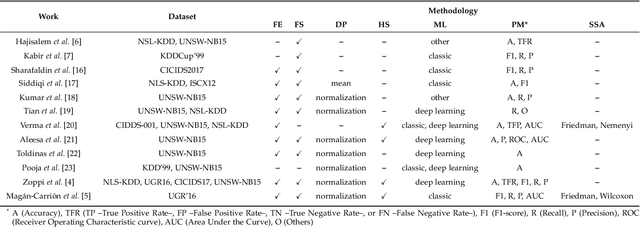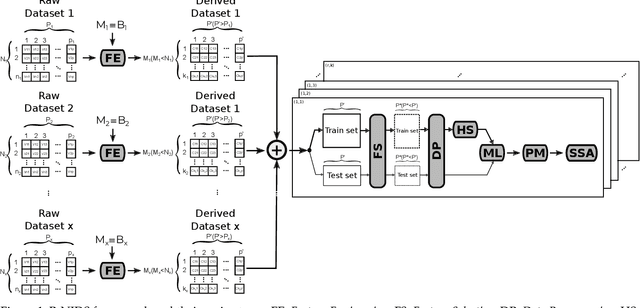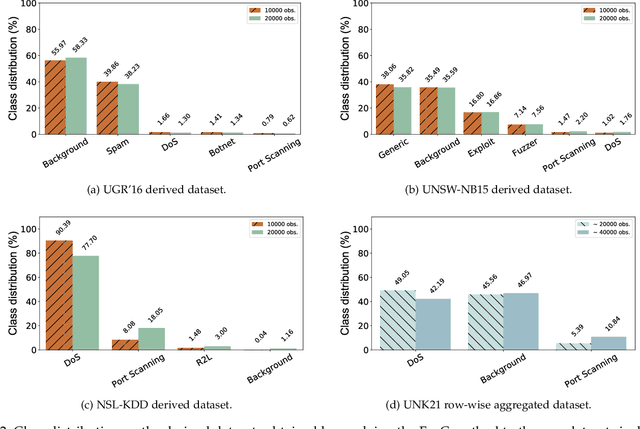Daniel Urda
Enhancing web traffic attacks identification through ensemble methods and feature selection
Dec 21, 2024Abstract:Websites, as essential digital assets, are highly vulnerable to cyberattacks because of their high traffic volume and the significant impact of breaches. This study aims to enhance the identification of web traffic attacks by leveraging machine learning techniques. A methodology was proposed to extract relevant features from HTTP traces using the CSIC2010 v2 dataset, which simulates e-commerce web traffic. Ensemble methods, such as Random Forest and Extreme Gradient Boosting, were employed and compared against baseline classifiers, including k-nearest Neighbor, LASSO, and Support Vector Machines. The results demonstrate that the ensemble methods outperform baseline classifiers by approximately 20% in predictive accuracy, achieving an Area Under the ROC Curve (AUC) of 0.989. Feature selection methods such as Information Gain, LASSO, and Random Forest further enhance the robustness of these models. This study highlights the efficacy of ensemble models in improving attack detection while minimizing performance variability, offering a practical framework for securing web traffic in diverse application contexts.
Improving the Reliability of Network Intrusion Detection Systems through Dataset Integration
Dec 02, 2021



Abstract:This work presents Reliable-NIDS (R-NIDS), a novel methodology for Machine Learning (ML) based Network Intrusion Detection Systems (NIDSs) that allows ML models to work on integrated datasets, empowering the learning process with diverse information from different datasets. Therefore, R-NIDS targets the design of more robust models, that generalize better than traditional approaches. We also propose a new dataset, called UNK21. It is built from three of the most well-known network datasets (UGR'16, USNW-NB15 and NLS-KDD), each one gathered from its own network environment, with different features and classes, by using a data aggregation approach present in R-NIDS. Following R-NIDS, in this work we propose to build two well-known ML models (a linear and a non-linear one) based on the information of three of the most common datasets in the literature for NIDS evaluation, those integrated in UNK21. The results that the proposed methodology offers show how these two ML models trained as a NIDS solution could benefit from this approach, being able to generalize better when training on the newly proposed UNK21 dataset. Furthermore, these results are carefully analyzed with statistical tools that provide high confidence on our conclusions.
Advanced Machine Learning Techniques for Fake News (Online Disinformation) Detection: A Systematic Mapping Study
Dec 28, 2020



Abstract:Fake news has now grown into a big problem for societies and also a major challenge for people fighting disinformation. This phenomenon plagues democratic elections, reputations of individual persons or organizations, and has negatively impacted citizens, (e.g., during the COVID-19 pandemic in the US or Brazil). Hence, developing effective tools to fight this phenomenon by employing advanced Machine Learning (ML) methods poses a significant challenge. The following paper displays the present body of knowledge on the application of such intelligent tools in the fight against disinformation. It starts by showing the historical perspective and the current role of fake news in the information war. Proposed solutions based solely on the work of experts are analysed and the most important directions of the application of intelligent systems in the detection of misinformation sources are pointed out. Additionally, the paper presents some useful resources (mainly datasets useful when assessing ML solutions for fake news detection) and provides a short overview of the most important R&D projects related to this subject. The main purpose of this work is to analyse the current state of knowledge in detecting fake news; on the one hand to show possible solutions, and on the other hand to identify the main challenges and methodological gaps to motivate future research.
 Add to Chrome
Add to Chrome Add to Firefox
Add to Firefox Add to Edge
Add to Edge